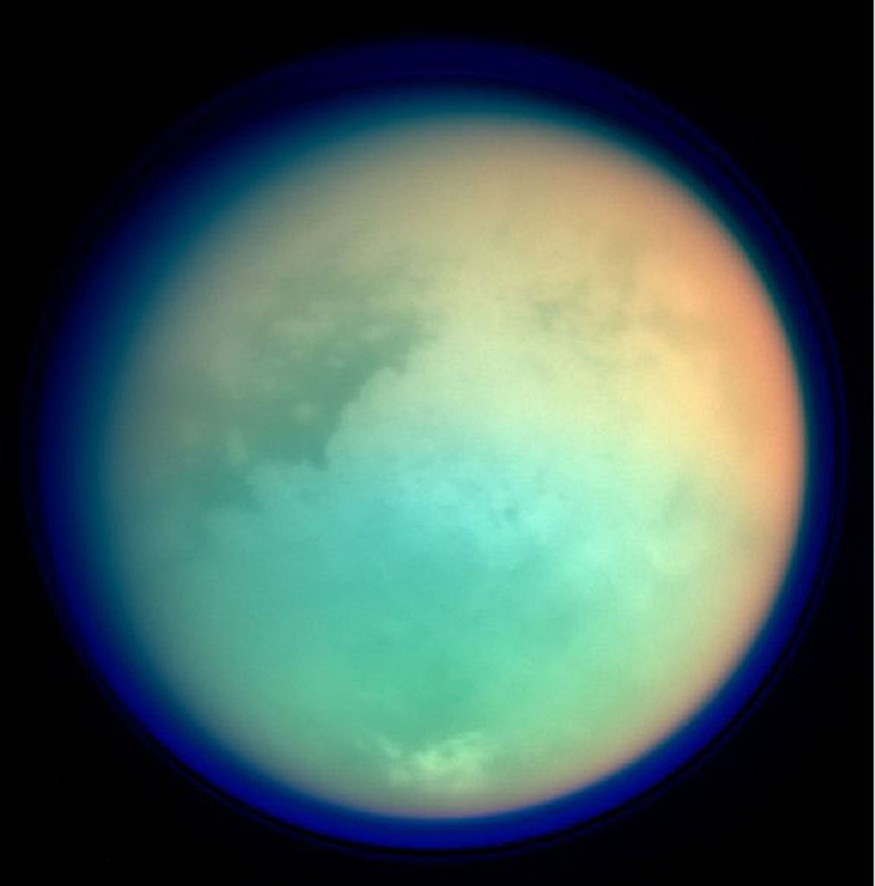Titan's dense, hazy orange atmosphere, filled with methane and organic compounds, overlays a surface adorned with dark dunes and liquid methane and ethane seas.
Further fascination arises from dynamic bright spots on the seas' surfaces observed in Cassini spacecraft's radar scans, varying in duration from hours to weeks or longer. Now, researchers suggest these could be clusters of organic solids formed in the atmosphere, gathering in lakes and drifting.

Mysterious 'Magic Islands' of Titan
The Cassini spacecraft, launched in October 1997, completed a 3.5 billion km journey, utilizing gravitational slingshots from Venus (twice), Earth, and Jupiter before reaching Saturn in July 2004. Over its 14-year mission, Cassini explored Saturn, orbited the planet 290 times, and discovered seven new moons.
The Huygens probe, an interesting part of the mission, targeted Saturn's largest moon Titan, boasting a dense atmosphere and stable bodies of water.
Scientists observed peculiar 'magic islands' on Titan's lakes during the 2014 NASA/ESA Cassini-Huygens mission, sparking curiosity about their nature.
Previous theories proposed them as phantom islands caused by waves or real islands made of suspended solids, floating materials, or nitrogen gas bubbles. Xinting Yu and colleagues from the University of Texas aimed to uncover the islands' origin by examining the relationship between Titan's atmosphere, liquid lakes, and deposited solid materials.
Dr. Yu pondered whether the magic islands could be organics floating on the surface, akin to floating pumice on Earth. Titan's atmosphere performs a unique transformation, converting gases like methane and nitrogen into organic compounds.
The research team, led by Dr. Yu, explored the fate of these compounds upon reaching Titan's surface, surprisingly discovering that they land as solids, even on the lakes. The subsequent exploration focused on understanding the processes occurring after these compounds settle, unraveling the mysteries of Titan's intriguing magic islands.
Exploring the Future of Titan's 'Magic Islands'
The team initiated an inquiry into whether the organic solids on Titan would dissolve in its methane lakes. Given the lakes' saturation with organic particles, they concluded that the descending solids would not dissolve upon reaching the liquid. Dr. Yu emphasized the need for the floating solids, such as the magic islands, to persist for a specific duration rather than sinking immediately.
Models indicated that the majority of frozen solids, being too dense and with low surface tension, couldn't generate Titan's magic islands unless they exhibited porosity resembling swiss cheese. If the icy clumps had appropriate dimensions and porosity, allowing slow methane seepage, they could linger at the surface.
While individual clumps might be too small to float independently, massing together near the shore could lead to larger pieces breaking off, resembling Earth's glaciers calving.
The combination of increased size and suitable porosity suggested that these organic glaciers might offer an explanation for Titan's magic island phenomenon. The study proposed that a thin layer of frozen solids coating Titan's seas and lakes could contribute to the unusual smoothness of these liquid bodies.
The researchers outlined conclusions about the fate of simple organics on Titan's surface, emphasizing that most would land as solids, while specific compounds would exist in liquid or gaseous states. Porosity-induced flotation of millimeter-sized and larger particles emerged as the plausible mechanism for floating solids, aligning with observations of Titan's transient radar-bright magic islands.
RELATED ARTICLE: Concept Submarine May Explore Titan's Seas by the 2030s
Check out more news and information on Titan in Science Times.
© 2025 ScienceTimes.com All rights reserved. Do not reproduce without permission. The window to the world of Science Times.












